Art /Entertainment
What is the Cultural Impact of Global Streaming Services?
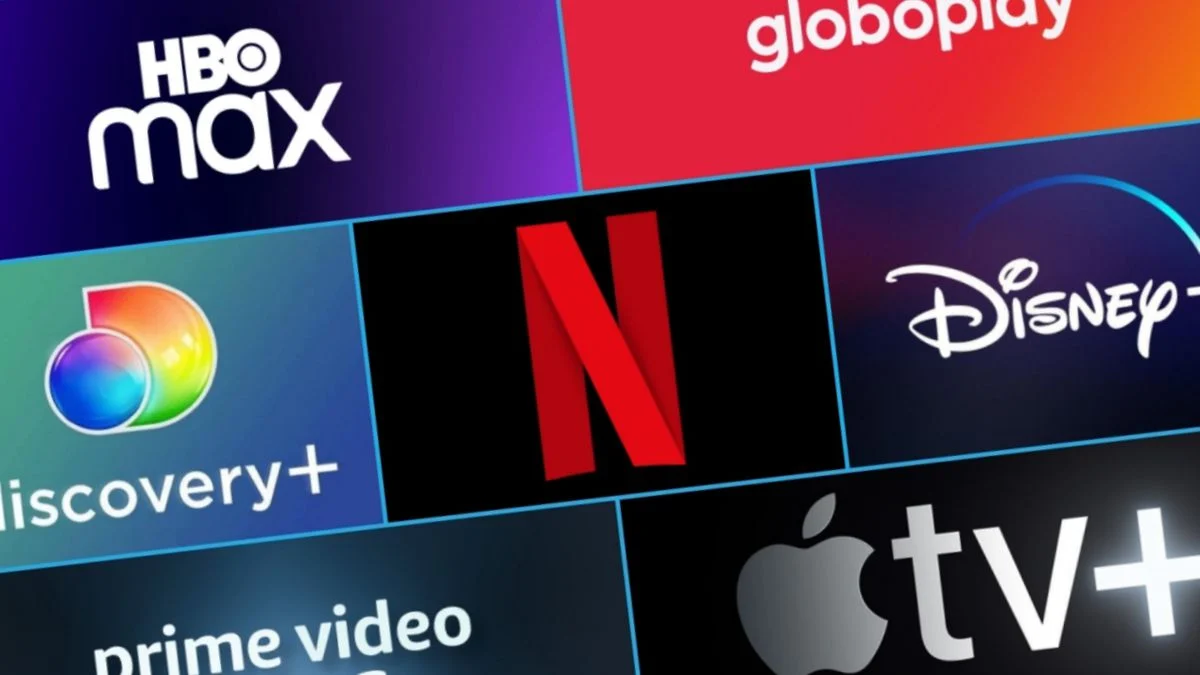
Introduction
Global streaming services like Netflix, Amazon Prime, and Disney+ have changed the way we watch movies and TV shows. These platforms let us watch content whenever and wherever we want. They offer a huge variety of entertainment from around the world, giving people access to shows, movies, and documentaries in many languages and genres. As more people use these services, they have started to shape both the entertainment industry and our culture. In this article, we will discuss how these global streaming platforms are changing the way we experience and enjoy media.
The Growth of Global Streaming Services
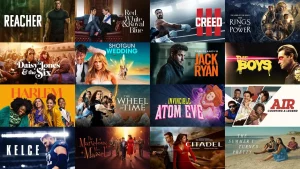
Image by: Yandex.com
In the last decade, streaming services have grown rapidly. These services let users watch their favorite content at any time, which is very different from the traditional way of watching shows on TV at set times. Now, with just a few clicks, we can access an endless amount of content from our smartphones, tablets, or computers.
Streaming services have expanded across the globe. As more people have access to the internet, these platforms are able to offer content to people from different countries. This change has not only provided more entertainment options but also helped connect cultures by allowing people to enjoy shows and movies from other parts of the world.
How Streaming Services Promote Cultural Exchange

Image by: Yandex.com
One of the major impacts of streaming services is that they bring global content to local audiences. Shows from different countries, such as Mexican dramas, South Korean thrillers, or French comedies, are now available alongside popular Hollywood movies. This has made it easier for people to enjoy content from other cultures.
Streaming services have also helped foreign-language content become popular worldwide. Shows like Money Heist (Spain), Squid Game (South Korea), and Narcos (Colombia) have found audiences all over the world. People are now more open to watching content in languages other than English. This change is helping break down language barriers and expand the global reach of different cultures.
How Streaming Services Are Changing the Entertainment Industry
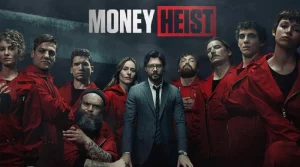
Image by: Yandex.com
Global streaming services have forced the entertainment industry to change. For example, traditional TV networks are being challenged by platforms that allow people to watch what they want, when they want. The old model of airing one episode of a show each week is becoming less common, as streaming platforms often release entire seasons at once. This change has led to the rise of binge-watching, where viewers watch many episodes in one sitting.
Moreover, streaming platforms have made it easier for people from all over the world to create content. Filmmakers and TV producers from different countries now have the chance to reach global audiences. This has led to more diverse stories being told, from different cultures and backgrounds, which is helping create a more inclusive entertainment world.
The Role of Streaming Services in Social and Political Movements

Image by: Yandex.com
Streaming services do more than just entertain; they also bring attention to important social and political issues. Shows and movies on these platforms often explore themes like mental health, inequality, or race, which can spark public conversations. For example, the show 13 Reasons Why raised awareness about bullying and suicide, while The Crown has helped people think about the British monarchy and its role in history.
By providing a platform for these types of stories, streaming services give a voice to marginalized communities. Shows like Pose, which explores LGBTQIA+ issues, and When They See Us, which tells the true story of the Central Park Five, have become cultural milestones. Streaming platforms are helping to create a space where important social discussions can take place.
The Impact of Streaming on Local Cultures

Image by: Yandex.com
While global streaming services promote cultural exchange, they also raise concerns about the effect on local cultures. Some critics worry that streaming platforms, especially those based in the United States, are making it harder for local content to thrive. When Hollywood movies and Western TV shows are widely available, local productions may struggle to compete.
However, this challenge has led some countries to take action. For example, South Korea has been successful in using streaming platforms to spread Korean culture, including K-dramas and K-pop music, around the world. These successes show that local content can find global audiences if it is given the chance.
Changing the Way We Watch Content
Streaming services have also changed how people watch content. In the past, families or friends would gather together at a specific time to watch a show or movie on TV. Now, people can watch on their own schedules and on different devices, like smartphones and tablets. This shift has made watching more personal, but it has also affected how people connect with others.
The rise of social media has played a big part in this change. Viewers can now share their thoughts and discuss their favorite shows with others online. Platforms like Twitter and Instagram allow people to interact with fans from all over the world. This has created global fan communities that unite people over shared interests, further showing the cultural power of streaming services.
Streaming Services and Changing Viewing Habits

Image by: Yandex.com
The way people watch TV and movies has changed thanks to streaming services. In the past, people had to follow schedules to watch their favorite shows, and they had to wait a week between episodes. Today, viewers can binge-watch entire seasons of a show in one sitting. This new way of watching has made entertainment more flexible, allowing viewers to watch at their own pace. Whether they’re on the go or relaxing at home, people now have the freedom to choose when and how they want to watch their favorite shows.
The Influence of Streaming on Traditional TV
Streaming services have had a big impact on traditional TV networks. Many people are now canceling cable TV subscriptions in favor of streaming. They enjoy the freedom of on-demand content without the need to pay for expensive cable packages. This shift has forced traditional TV companies to rethink how they operate. Some have started to offer their own streaming platforms, while others have partnered with existing services to keep up with the changing times. The rise of streaming has created new challenges for TV networks but also opened up new ways for them to connect with viewers.
How Streaming Services Support New Creators
Global streaming platforms have given new filmmakers and creators the opportunity to reach larger audiences. In the past, it was hard for small independent filmmakers to get their movies or shows seen by a wide audience. Now, streaming services provide a space for these creators to showcase their work. This has led to a wider range of content, from documentaries to experimental films, being made available to viewers. Many successful creators have been discovered through streaming platforms, showing that these services are helping new talent get noticed.
The Global Expansion of Streaming Services
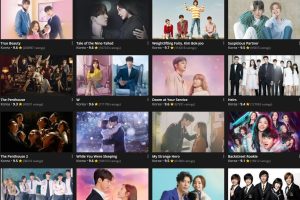
Image by: Yandex.com
Streaming services have expanded quickly across the globe. In the past, most TV shows and movies were only available in certain countries or regions. Now, with streaming, people everywhere can enjoy content from different parts of the world. For example, a popular show in South Korea can be watched by people in the United States, Europe, and many other countries. This helps spread different cultures and languages, making it easier for people to connect with one another. As internet access improves, more people are able to enjoy global streaming services, making entertainment more available to everyone.
The Challenges of Global Streaming Services
While streaming services offer many benefits, they also face some challenges. One concern is the competition between local and global content. Some people worry that large streaming platforms will dominate the market and push out local shows and films. Additionally, there are issues with internet access in some areas, where people may not have reliable or fast connections to stream content. Another challenge is the cost of subscriptions, as prices can add up if you subscribe to multiple platforms. Lastly, some countries have strict regulations on content, which can limit what streaming services can show.
The Future of Global Streaming Services

Image by: Yandex.com
The future of global streaming services looks promising. As technology continues to improve, streaming platforms will likely offer even better content and features. We can expect more interactive shows, virtual reality experiences, and higher-quality video. Streaming services may also focus on expanding into new markets, offering more localized content to cater to different tastes and cultures. With the rise of artificial intelligence, platforms might also personalize recommendations even further, making it easier for viewers to discover new content. The way we watch and enjoy media is always evolving, and streaming will continue to play a major role in shaping its future.
Analysis Table: The Cultural Impact of Global Streaming Services
| Aspect | Positive Impact | Challenges/Negative Impact |
|---|---|---|
| Cultural Exchange | Easier access to global content. | Risk of overshadowing local cultural identity. |
| Globalization of Content | Helps spread diverse stories to international audiences. | Can lead to the dominance of one culture’s media. |
| Entertainment Industry | More opportunities for global collaboration. | Traditional TV networks face difficulties adapting. |
| Social and Political Change | Encourages conversations on important issues. | Some topics may cause controversy. |
| Local Content Protection | Some countries protect and promote local content. | Local industries struggle to compete with global giants. |
Comparative Table: Global Streaming Services vs Traditional Media
| Factor | Global Streaming Services | Traditional TV/Media |
|---|---|---|
| Access to Content | On-demand, accessible anytime and anywhere. | Content available only at set times and locations. |
| Content Variety | Wide variety of international content. | Primarily local or regional content. |
| Viewing Flexibility | Watch anytime, on any device. | Fixed time slots, limited devices. |
| Cultural Influence | Promotes cultural exchange and diversity. | Focuses mainly on local culture. |
| Cost | Affordable subscription-based models. | Often more expensive, includes commercials. |
Conclusion
Global streaming services have had a huge cultural impact on the way we watch TV, movies, and other media. These platforms have made it easier to access content from different cultures and have opened the door for diverse voices in the entertainment industry. They have also helped bring attention to important social issues and allowed local content to reach global audiences. While there are some concerns about the effect on local cultures, the rise of streaming services has made a lasting mark on both entertainment and society. As technology continues to evolve, the cultural impact of these services will only grow.
Art /Entertainment
DOD Highlights: Hollywood Movies in Telugu Dubbed List
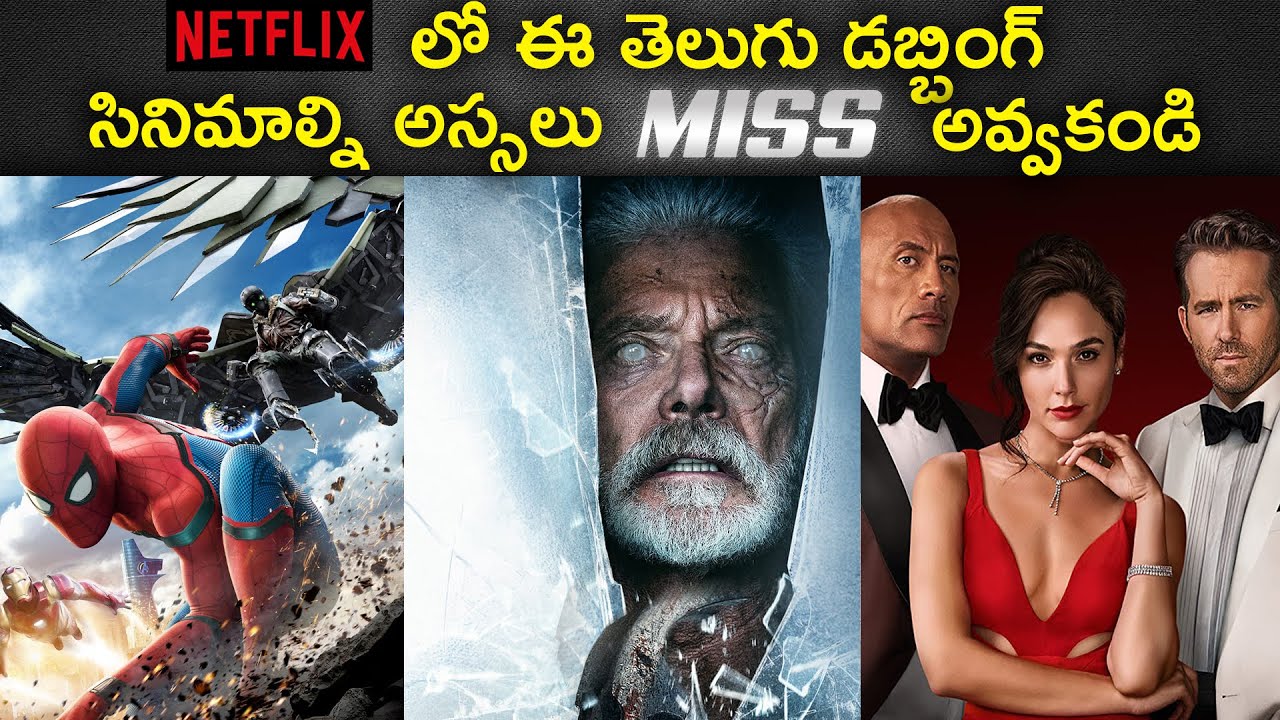
Introduction
Looking for an edge-of-the-seat experience with Hollywood movies in Telugu dubbed? Dimension On Demand (DOD) brings international blockbusters closer to Indian audiences with a growing Hollywood movies in Telugu dubbed list that blends action, sci-fi, thrill, and drama—all in your language. Whether it’s high-tech battles, espionage missions, or war-torn conflicts, DOD ensures every story feels as gripping as watching in theaters.
By offering Hollywood movies in Telugu dubbed, DOD bridges the global-local gap. The platform ensures Telugu-speaking audiences can enjoy the performances of international stars like Zina Blahusova, Louis Fan, Baltazar Ploteau, and Ji Hao—without missing the emotion, thrill, or drama of the original. Let’s explore the Hollywood movies in Telugu dubbed list you can stream today.
Why Are Hollywood Movies Dubbed in Telugu?
The practice of dubbing Hollywood movies into regional languages is not new. With the increasing popularity of Hollywood films in India, especially in the Telugu-speaking states, there has been a growing need to provide these movies in languages that audiences are most comfortable with. Telugu-speaking viewers, who have an insatiable appetite for cinema, want to enjoy the latest global hits without language barriers.
Dubbing Hollywood movies into Telugu also makes them more accessible, allowing for a wider reach. Telugu-speaking families, children, and elderly viewers, who may not be comfortable with English, can enjoy these films without missing out on their favorites. Additionally, dubbing adds a local flavor to the content, making it more relatable for the audience.
DOD Highlights: Hollywood Movies in Telugu Dubbed List
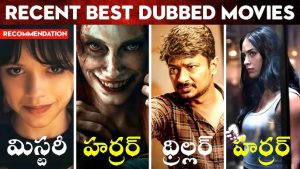
Image by: Yandex.com
1. Unstoppable: Sci-Fi Action at Its Peak
- Director: Feng Yang
- Stars: Zina Blahusova, Louis Fan, Ji Hao
In the futuristic world of 2080, Earth becomes a refuge for immigrants before a meteor shower changes everything. The Bologna meteorite mutates ordinary people into terrifying beings spider-women and men with pink hair creating chaos across the planet. Stepping up against this apocalyptic threat is Louis Fan, the martial arts star who brings raw energy to the screen. His action-packed sequences make Unstoppable a must on the Hollywood movies in Telugu dubbed list.
Zina Blahusova shines with emotional depth, balancing the high-stakes action with human resilience, while Ji Hao adds intensity as the unexpected hero from China who dares to take on the mutated army. With breathtaking VFX and fast-paced storytelling, Unstoppable is not just a sci-fi flick—it’s a global spectacle.
Watching this in Telugu on DOD transforms every explosion, scream, and heroic strike into an immersive experience. Among Hollywood movies in Telugu dubbed, Unstoppable is a cinematic adrenaline rush that should not be missed.
2. Guy Manley: Super Spy: Espionage Meets Action
- Director: David Andersson
- Stars: Baltazar Ploteau, Anton Sjölund, Milton Björnegren
The spy genre gets a fresh jolt with Guy Manley: Super Spy. Ex-spy Guy Manley, played by Baltazar Ploteau, is forced out of retirement for one final mission—an assassination that could shift political power forever. Tasked with eliminating Rich Cash to prevent him from becoming mayor, Guy is pulled into a deadly conspiracy that tests loyalty, morality, and skill.
Baltazar Ploteau dominates the screen with a rugged intensity, while Anton Sjölund and Milton Björnegren deliver strong performances that heighten the intrigue. Fans of international espionage thrillers will find Guy Manley: Super Spy one of the strongest entries in the Hollywood movies in Telugu dubbed list.
DOD ensures that Telugu audiences get the full flavor of its suspense and action, with dubbing that captures every sly exchange, tense standoff, and brutal fight. For anyone browsing Hollywood movies in Telugu dubbed, this title is a perfect mix of mind games and muscle.
3. Cruel War (2024): Conflict, Betrayal, and Survival
- Director: Guan Yue
- Stars: Lin Xiang, Yan Xin, Li Wenyao
Cruel War (2024) brings raw intensity to the Hollywood movies in Telugu dubbed list with its gripping mix of science, betrayal, and survival. Yan Xin, a scientist experimenting with gene-edited rubber seeds, travels to Yinfan Island hoping to cultivate a new world. But with drug lord Li Wenyao pulling strings in the shadows, her mission spirals into violence and war.
Lin Xiang, a security expert with a personal stake, steps in to protect Yan Xin. Their fractured past adds emotional weight, while the looming conflict with Li Wenyao creates a relentless atmosphere of danger. With conspiracies, firefights, and an ultimate showdown between good and evil, Cruel War cements itself as one of the most impactful Hollywood movies in Telugu dubbed available today.
DOD’s dubbing brings every emotional outburst and explosive confrontation alive for Telugu audiences. For those searching for intense Hollywood movies in Telugu dubbed list, Cruel War is a top recommendation.
Why Watch Hollywood Movies in Telugu Dubbed on DOD?
- Actor-Oriented Access: Experience international stars like Louis Fan, Zina Blahusova, and Eric Roberts in a language you connect with.
- Genre-Specific Thrills: From sci-fi and espionage to war-driven drama, DOD’s Hollywood movies in Telugu dubbed list is packed with adrenaline.
- Professional Dubbing: Studio-quality dubbing ensures every performance feels natural in Telugu.
- Seamless Streaming: Watch anywhere, anytime, with optimized performance across devices.
- Curated Library: DOD brings together not just action and sci-fi, but also the Latest Hollywood movies in Hindi, ensuring variety for every viewer.
Stream now the Hollywood Movies in Telugu Dubbed List on DOD
- Unstoppable
- Guy Manley: Super Spy
- Cruel War (2024)
These Hollywood movies in Telugu dubbed list ensure you always have access to stories that entertain, thrill, and inspire now with the ease of Telugu dubbing.
The Appeal of Dubbed Hollywood Movies in Telugu
The popularity of Hollywood films in Telugu-speaking regions can be attributed to several factors:
1. Wider Audience Reach
By dubbing Hollywood films in Telugu, filmmakers ensure that their content reaches a larger, more diverse audience. Telugu-speaking viewers can now enjoy global cinematic masterpieces without having to rely on subtitles or their understanding of English.
2. Regional Appeal
Dubbing adds a local flavor to Hollywood films, making them more relatable and immersive for the audience. The addition of regional dialects and expressions can also enhance the emotional connection viewers feel with the film.
3. Family-Friendly Content
Many Hollywood films are family-oriented, and the dubbing process makes it easier for families to watch movies together. Telugu-dubbed films are particularly popular among young children who may not yet be able to follow English dialogue.
4. Globalized Cinema
As the world becomes more interconnected, the demand for international content grows. Telugu-speaking audiences have embraced Hollywood films, and dubbing allows them to enjoy the best of both worlds—international cinema in a language they understand.
Conclusion
Hollywood movies dubbed in Telugu have opened up a world of entertainment for regional audiences, making global cinematic experiences more accessible and enjoyable. From action-packed thrillers like Avengers to animated classics like Frozen, these films provide endless entertainment for all ages.
With the increasing popularity of Hollywood films in India, especially in Telugu-speaking states, the demand for more dubbed content is only set to grow. As the film industry continues to evolve, we can expect even more iconic Hollywood movies to be dubbed into Telugu, giving fans an exciting and immersive cinematic experience in their native language.
So, whether you are a fan of superheroes, animated adventures, or heartwarming dramas, there’s a world of Hollywood films waiting for you in Telugu. Enjoy the magic of cinema with these unforgettable films dubbed into your language!
Final Takeaway
From sci-fi epics to spy thrillers and war-driven sagas, DOD’s Hollywood movies in Telugu dubbed list delivers nonstop excitement. Whether it’s the futuristic chaos of Unstoppable, the espionage intrigue of Guy Manley: Super Spy, or the gripping survival in Cruel War (2024), these films bring Hollywood closer to Telugu-speaking audiences.
Stop searching endlessly stream Hollywood movies in Telugu dubbed on DOD today and experience global cinema like never before.
Art /Entertainment
English Dubbed Movies on DOD: Horror and Action Thrills Await

Introduction
The thrill of Hollywood doesn’t have to be locked away in just one language. With English dubbed movies, global blockbusters now reach every corner of India, letting audiences experience the same adrenaline rush, chilling suspense, and jaw-dropping action sequences in their own language. DOD takes this one step further, delivering genre-perfect dubs that capture not only the words but also the intensity, emotions, and atmosphere of each performance.
Whether you’re into sci-fi showdowns, zombie-filled nightmares, or supernatural thrillers, DOD’s carefully curated collection of English dubbed movies ensures you won’t miss a beat. Let’s dive into some of the most gripping films currently available — each one an electrifying reason to explore the world of Dubbed Movies English.
Decade of the Dead: A Zombie Apocalypse Reborn
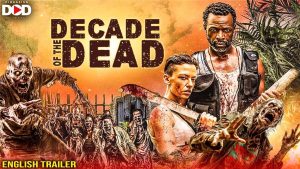
Image by: Yandex.com
When it comes to survival horror, Decade of the Dead raises the stakes to terrifying new heights. Directed by Adam Deyoe, known for his sharp work in genre cinema, and Fairai Branscombe Richmond, the film is an intense blend of horror, action, and raw human drama.
At the heart of the movie is Jenna Leigh Green, best remembered for her cult-favorite role in Sabrina the Teenage Witch. Alongside her, Sean Patrick Thomas, who made audiences cheer in Save the Last Dance, and Shane Johnson, celebrated for his chilling presence in Power, deliver powerhouse performances.
The plot sets itself a decade after a devastating zombie outbreak. Survivors think they’ve finally found peace on a tropical island. But paradise quickly turns sinister when they discover a cult worshiping zombies, with terrifying plans to dominate the wasteland.
On DOD, the English dubbed movies version amplifies every moment of dread, from the growl of the undead to the whispered schemes of cult leaders. It’s an apocalyptic experience no fan of Dubbed Movies English should miss.
Day of Reckoning: Humanity’s Final Stand
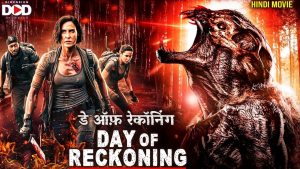
Image by: Yandex.com
For sci-fi and horror lovers, Day of Reckoning is an absolute must-watch. Directed by Joel Novoa, who also worked on the acclaimed Arrow TV series, the movie combines supernatural suspense with high-octane action.
The cast includes Heather McComb, known for her gripping role in Party of Five, Jackson Hurst, loved for Drop Dead Diva, and Jay Jay Warren, one of the rising talents of Hollywood horror. Together, they create a survival story that pits humans against monstrous creatures from the underworld.
Set fifteen years after a horrific invasion, the Earth once again faces annihilation. The “Day of Reckoning” survivors must band together in a desperate attempt to repel the forces of darkness. With unrelenting battles, nightmarish creatures, and an epic fight for survival, it’s a film that resonates deeply with fans of action-heavy horror.
Thanks to DOD, the English dubbed movie version ensures that Indian audiences can experience the same pulse-pounding urgency — whether you’re watching in Hindi, Tamil, Telugu, Bangla, or sticking with English. This is more than just another survival story; it’s an event.
The Echo: A Haunting You Won’t Escape

Image by: Yandex.com
Switching gears from epic battles to spine-tingling dread, The Echo proves that not all horrors scream; some whisper their way under your skin. Directed by Yam Laranas, who helmed the internationally recognized thriller The Road, this film builds a suffocating atmosphere of fear and inevitability.
Jesse Bradford, widely praised for Bring It On and Swimfan, leads the cast with a gripping performance as an ex-con trapped in a cursed apartment building. Alongside him, Amelia Warner and Carlos Leon add depth and haunting realism to the narrative.
The story follows a man trying to rebuild his life after prison, only to discover his new home harbors a domestic nightmare that spirals into a supernatural curse. The tension is relentless, blending emotional vulnerability with chilling terror.
On DOD, The Echo shines as one of the standout English dubbed movies, with the dubbing adding weight to every scream, every silence, and every eerie footstep. For those who crave horror that lingers long after the credits, this is a must-watch.
Why English Dubbed Movies on DOD Stand Out
Dubbing isn’t just about translating words it’s about preserving intensity, performances, and atmosphere. On DOD, English dubbed movies aren’t diluted versions of their originals. Instead, they’re immersive experiences tailored for diverse Indian audiences.
- Actor-Centric Voice Casting: The dubbing process mirrors the tone and personality of each actor, ensuring that fans of performers like Sean Patrick Thomas, Heather McComb, or Jesse Bradford still connect with their characters.
- Genre-Specific Precision: Whether it’s the monstrous action of Day of Reckoning, the apocalyptic survival of Decade of the Dead, or the haunted silence of The Echo, each genre is perfectly captured in its dubbed form.
- Multi-Language Reach: With Hindi, Tamil, Telugu, Bangla, and more, DOD ensures every region experiences the same Hollywood thrill.
DOD’s English Dubbed Movies Collection Curated for You

Image by: Yandex.com
To make it easy for fans, here’s a look at some of the genre-defining titles currently on DOD’s Hollywood English dubbed movies list:
- Decade of the Dead: An action-packed survival horror with cult-driven chills
- Day of Reckoning: A sci-fi, action-horror showdown against otherworldly creatures
- The Echo: A suspenseful action-thriller about curses, silence, and fear
This carefully curated Hollywood movies in English dubbed list shows the sheer variety available — from undead nightmares to otherworldly invasions and supernatural curses.
Final Word
For fans across India, English dubbed movies on DOD bring the full force of Hollywood — action, horror, sci-fi, and thrillers — into your own language. With gripping performances, award-worthy direction, and stories that keep you hooked, this isn’t just watching a movie; it’s living it.
So, if you’ve been searching for the ultimate Dubbed Movies English collection, DOD has your back. From the zombie-infested apocalypse of Decade of the Dead to the high-stakes supernatural battles of Day of Reckoning and the cursed silence of The Echo, every film is a reminder of why dubbed cinema has never been this powerful.
Art /Entertainment
Boss IPTV Official Website: Your Trusted Platform for Entertainment

Introduction
In today’s digital world, people want easy access to entertainment. Whether it’s movies, sports, live news, or TV shows, everyone is looking for a reliable way to watch their favorite content. That’s where IPTV comes in. IPTV stands for Internet Protocol Television, a modern way to stream content using the internet instead of traditional cable or satellite. One of the most trusted names in this space is Boss IPTV. The Boss IPTV Official Website is your go-to place for high-quality entertainment, offering thousands of channels and a wide variety of content for users around the world.
What is Boss IPTV?
Boss IPTV is a streaming service that delivers live TV, on-demand movies, series, and more directly over the internet. Instead of using cable wires or satellite dishes, all you need is an internet connection and a compatible device. Boss IPTV gives users access to hundreds or even thousands of channels from different countries, making it a great choice for people looking for variety and value.
This platform has gained popularity because of its wide content selection, affordable pricing, and ease of use. Whether you’re into sports, news, kids’ programming, or international channels, Boss IPTV has something for everyone.
Key Features of the Boss IPTV Official Website
When you visit the Boss IPTV official website, you’ll notice how easy it is to navigate. The website is designed to provide all the information you need quickly. Here are some features you’ll find on the site:
1. User-Friendly Interface
The homepage is clean and simple. You can easily find package options, features, contact information, and setup instructions.
2. Channel Lists
The official site usually offers detailed channel lists so you can see what kind of content you’re getting. This includes sports channels, movie channels, news outlets, and international stations.
3. Subscription Plans
Boss IPTV provides flexible subscription plans to fit every budget. You can choose from monthly, quarterly, or yearly packages. The official website often displays these plans clearly so users can compare and decide what works best.
4. Device Compatibility
On the Boss IPTV official website, you can find a list of supported devices. Boss IPTV works on Android boxes, Smart TVs, Firestick, MAG boxes, iOS devices, and more.
5. Installation Guides
For first-time users, the website usually includes step-by-step instructions on how to install the IPTV app on your device. These guides are easy to follow, even if you’re not tech-savvy.
6. Customer Support
Reliable support is another reason people trust Boss IPTV. The official website typically includes live chat options, contact forms, or even WhatsApp support for quick help.
Why Choose Boss IPTV?

Image by: Yandex.com
There are many IPTV providers out there, so what makes Boss IPTV stand out? Here’s why it’s trusted by thousands:
1. Wide Variety of Channels
Boss IPTV offers a huge selection of channels from different countries and genres. Whether you want local news or international sports, you’ll find it all in one place.
2. High-Quality Streaming
One of the main benefits of using Boss IPTV is its high-definition streaming. Many of the channels are available in HD or even 4K, giving you a great viewing experience.
3. Buffer-Free Experience
With strong servers and high uptime, Boss IPTV offers smooth streaming with little to no buffering. This makes it perfect for live events like sports or concerts.
4. Affordable Pricing
Compared to traditional cable services, Boss IPTV is very affordable. You can get access to thousands of channels for a fraction of the price of a cable subscription.
5. No Long-Term Contracts
You don’t have to commit to a long-term plan. With Boss IPTV, you can pay as you go and cancel anytime, giving you full control.
What Can You Watch on Boss IPTV?
The Boss IPTV platform covers nearly every type of content you can think of:
- Live Sports: Football, cricket, basketball, UFC, and more
- Movies: New releases, classics, and international films
- TV Shows: Both current and past episodes from popular series
- Kids’ Programming: Cartoons, educational shows, and family content
- Documentaries: Explore nature, science, history, and more
- International Content: Channels from the US, UK, Canada, India, and many other countries
Whether you’re watching alone or with your family, you’ll always find something that suits your mood.
Is Boss IPTV Legal?
IPTV itself is a legal technology. It depends on how it’s used and what content is being shared. Always use IPTV services like Boss IPTV responsibly and make sure to check local laws. The Boss IPTV official website usually includes terms of service and legal disclaimers, so you can read and understand what’s allowed.
Devices Supported by Boss IPTV
One of the best parts about Boss IPTV is that it works on almost any device. Here are some common platforms it supports:
- Android TV boxes and smartphones
- Amazon Firestick and Fire TV
- Smart TVs (Samsung, LG, etc.)
- Windows and Mac computers
- iOS devices (iPhone and iPad)
- MAG and Enigma2 boxes
You can use it on your main TV at home, on your tablet while traveling, or even on your phone during breaks at work.
How to Get Started
Getting started with Boss IPTV is simple and quick:
- Visit the Boss IPTV official website
- Browse the available subscription packages
- Select a plan that suits your needs
- Complete the sign-up process
- Follow the installation guide for your device
- Start streaming and enjoy your content
You don’t need any fancy setup or technical skills. Just follow the instructions and start watching.
Tips for a Better IPTV Experience
To make the most of your Boss IPTV service, follow these simple tips:
- Use a fast and stable internet connection (at least 15 Mbps)
- Use a VPN for more secure and private streaming
- Keep your device updated to avoid performance issues
- Reach out to support if you face any trouble installing or using the app
Conclusion
The Boss IPTV official website is your trusted gateway to a world of entertainment. It offers easy access to thousands of channels, high-quality streams, and affordable packages—all without the hassle of cable. Whether you’re into sports, movies, or international news, Boss IPTV has something for everyone. With a simple setup, strong customer support, and content for all ages, it’s a top choice for viewers who want more freedom and value from their entertainment. So, if you’re ready to cut the cord and upgrade your streaming experience, Boss IPTV is the way to go.
-
Business2 years ago
Cybersecurity Consulting Company SequelNet Provides Critical IT Support Services to Medical Billing Firm, Medical Optimum
-
Business2 years ago
Team Communication Software Transforms Operations at Finance Innovate
-
Business2 years ago
Project Management Tool Transforms Long Island Business
-
Business2 years ago
How Alleviate Poverty Utilized IPPBX’s All-in-One Solution to Transform Lives in New York City
-
health2 years ago
Breast Cancer: The Imperative Role of Mammograms in Screening and Early Detection
-
Sports2 years ago
Unstoppable Collaboration: D.C.’s Citi Open and Silicon Valley Classic Unite to Propel Women’s Tennis to New Heights
-
Art /Entertainment3 years ago
Embracing Renewal: Sizdabedar Celebrations Unite Iranians in New York’s Eisenhower Park
-
Finance3 years ago
The Benefits of Starting a Side Hustle for Financial Freedom































